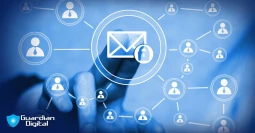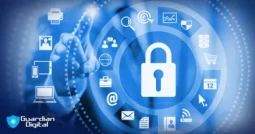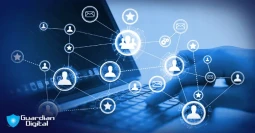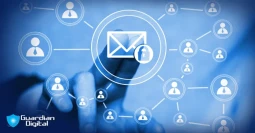Email Authentication: Acronyms and What They Represent
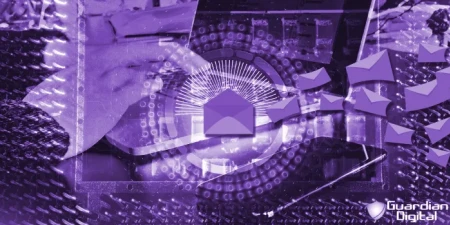
Email authentication is a critical security tool that confirms that an email comes from a valid source and foils impersonation attempts. By establishing the identity of a message's originator and integrity, authentication protocols allow companies to secure their domains and enhance communication deliverability.
A variety of technologies work together to enable email authentication, each with a specific role in confirming legitimacy, checking for tampering, and imposing security policies. An understanding of these critical protocols—SPF, DKIM, DMARC, BIMI, ARC, and MTA-STS—helps both companies and individuals protect communications effectively.
The Most Critical Email Authentication Protocols
SPF – Sender Policy Framework
The first line of defense for a domain is SPF, which identifies which mail servers can send messages in its name. As an email comes in, the recipient server looks at an SPF record located in the sending domain's DNS. If an email can be traced to an unauthorized source, it can be marked for spamming or outright refused. Yet, SPF doesn't authenticate an actual message's contents—only its origin.
DKIM – DomainKeys Identified Mail
DKIM takes security a notch higher, confirming that an email hasn't been tampered with during delivery. It does this through an additional cryptographic tag placed in an email header once a recipient server can verify it with a public key stored in a sending party's DNS. As effective as DKIM is at foiling email tampering, it doesn't remove sophisticated impersonation altogether unless paired with additional types of authentication.
DMARC – Domain-based Message Authentication, Reporting, and Conformance
DMARC extends the basis of SPF and DKIM, allowing domain owners to control the fate of unauthenticated messages. It empowers companies to implement policies that can monitor, quarantine, or reject unauthenticated messages. In addition, DMARC introduces strong reporting capabilities, allowing domain owners to monitor unauthorized message activity and implement security improvements over time.
BIMI – Brand Indicators for Message Identification
BIMI is a new protocol designed to promote brand awareness and build trust in message communications. It allows brands to present their approved logos with authenticated messages. Nevertheless, BIMI requires a strong DMARC policy and a Verified Mark Certificate (VMC), making its use complex and costly.
ARC – Authenticated Received Chain
ARC addresses a common issue in message forwarding: SPF and DKIM tests often break when an email’s delivery path is altered. By storing authentication results when messages pass through several mail servers, ARC enables a recipient to trust messages received via message forwarding and not suffer from authentication failures.
MTA-STS – Mail Transfer Agent Strict Transport Security
MTA-STS takes security in messages a notch higher by requiring servers sending messages to use an encrypted TLS channel for communications. By imposing strong security policies in message transport, man-in-the-middle attacks are blocked. If a secure channel cannot be achieved, a message will not be delivered, protecting information during transmission.
Frequently Asked Questions about Email Authentication
How is an email authenticated?
An email is authenticated through SPF, DMARC, and DKIM, whose processes confirm a message’s legitimacy and integrity during message delivery. All three protocols work in harmony to counteract phishing and message impersonation attacks.
What are the mechanisms of email authentication?
Email authentication mechanisms include domain-based policies (SPF), cryptographic signatures (DKIM), and policy enforcement frameworks (DMARC). These ensure that only authorized mail servers can send emails on behalf of a domain.
How does email verification work?
Email verification checks whether an email address is valid and active, often by sending a confirmation email or using algorithms to detect fake or inactive addresses. This helps maintain clean mailing lists and reduces bounce rates.
How does SMTP authentication work?
SMTP authentication requires users to log in with valid credentials before sending emails, preventing unauthorized access to mail servers. It helps combat spam and ensures secure email delivery.
The Power of Authentication
Email authentication is essential for protecting inboxes against fraud and unauthorized access. While each protocol has its limitations, using multiple layers of authentication significantly strengthens email security. Understanding SPF, DKIM, DMARC, BIMI, ARC, and MTA-STS can help organizations improve their email deliverability, brand reputation, and overall cybersecurity resilience.
Learn More: Deep Dive into Email Authentication
Email authentication is a vast and evolving field with new threats and solutions constantly emerging. To stay ahead, it's essential to go beyond the basics and dive deeper into advanced strategies, implementation challenges, and real-world applications:
- Advanced strategies for implementing SPF, DKIM, and DMARC.
- Best practices for maintaining authentication protocols over time.
- Case studies on companies that improved email security.
- Guardian Digital EnGarde cloud email security enhances authentication reliability, reduces misconfigurations, and prevents spoofing through real-time threat detection and policy enforcement.
Visit our blog to explore these topics and more. Strengthen your organization’s defenses against email fraud and ensure your messages reach the inbox securely. Start implementing best practices today!
Other FAQs
- What Is Guardian Digital EnGarde Cloud Email Security?
- FAQs: What Are Some Examples of Malicious Code?
- How to Properly Scan Your Windows Computer for Malware & Remove Malware from Your PC
- FAQs: What Are Denial of Service (DoS) Attacks?
- FAQs: Why Outsource Businesses Email Security?
- What Is Domain Spoofing?
- What Are Insider Threats & How Can You Reduce Your Risk?
- The Silent Assassins: How Impersonation Attacks Target CEOs via Email
- How Can I Choose the Right Email Security Service for My Organization?
- What Are the Benefits of Managed Security Services Providers (MSSPs)?
